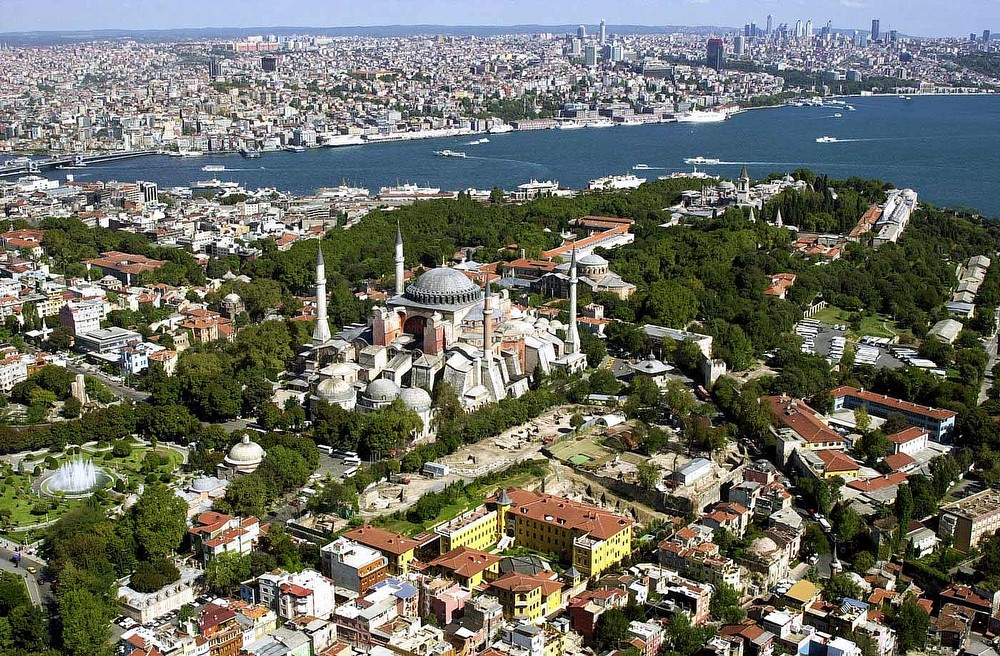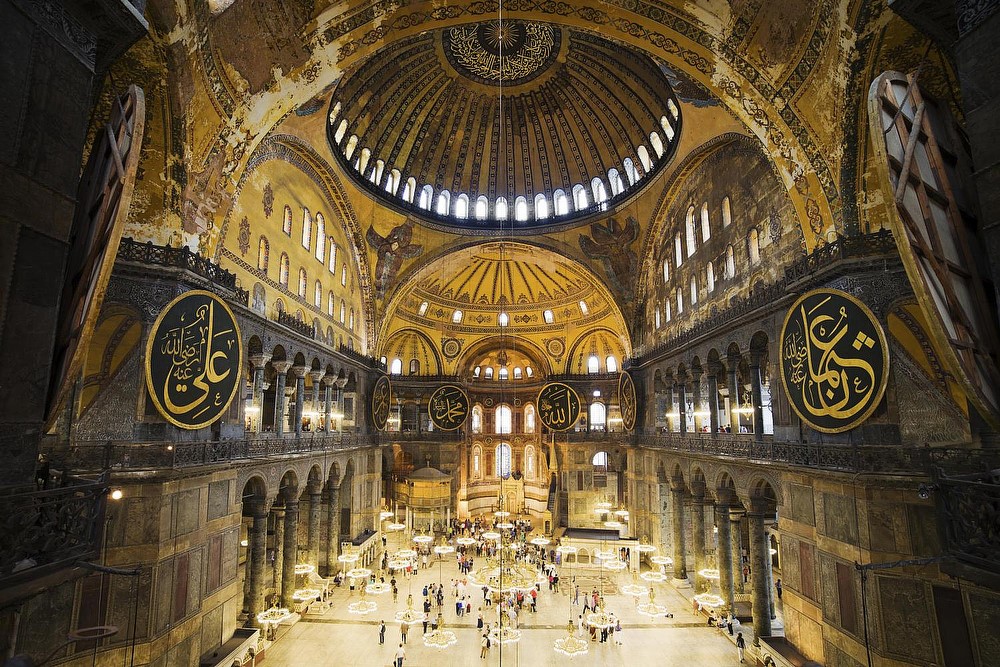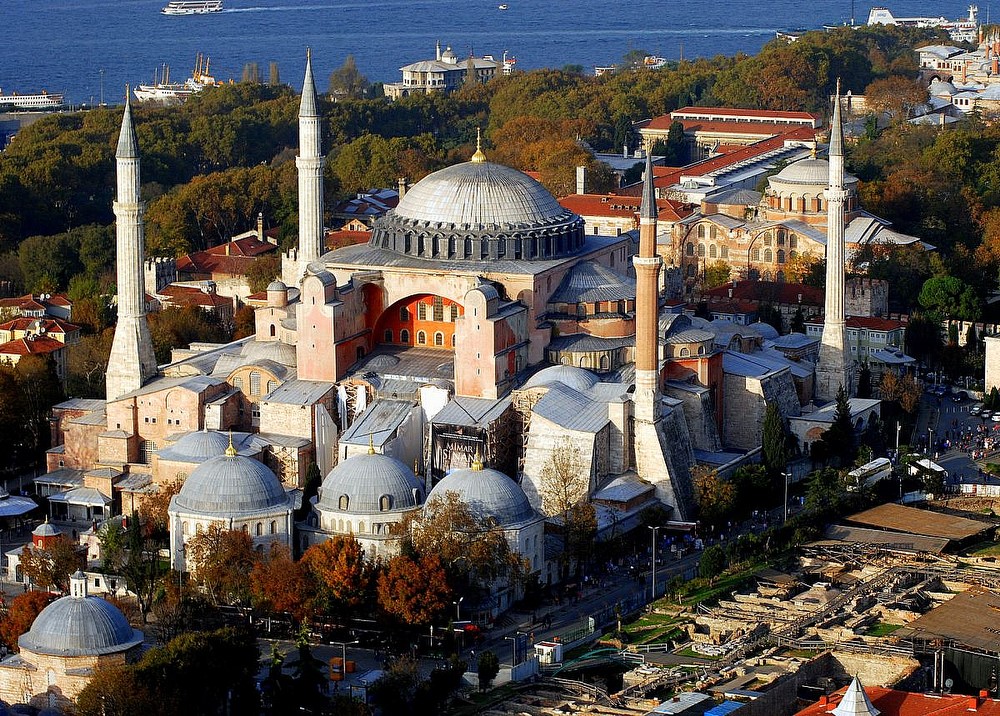HAGIA SOPHIA
One of the greatest surviving examples of Byzantine architecture, the Hagia Sophia (literally the Church of “Holy Wisdom”) has served as the seat of the Orthodox Patriarchy of Constantinople, a mosque, and (currently) a museum. The sixth-century historian, Procopius, marveled at the Hagia Sophia’s massive dome, rich mosaics, and marbled pillars: “The mind rises sublime to commune with God, feeling that he cannot be far off, but must especially love to dwell in the place which he has chosen.” Wander slowly through the cathedral to take in the spectacular mosaic scenes of the Virgin Mother, Jesus, the saints, many biblical narratives, and Byzantine emperors and their entourage.
The Hagia Sophia stands today in the Old City of Istanbul as majestic witness to more than 1400 years of Turkish history. Built under the personal supervision of the great Emperor Justinian I between 532 and 537 CE, legend has it that the emperor conceived of the project as atonement for his bloody suppression of the Nika Riot of 532 that left more than 30,000 dead. The Hagia Sophia served as the Imperial Cathedral throughout the Byzantine era, and in turn served the Ottoman Empire as its first Imperial Mosque. In 1935, Mustafa Kemal Atatürk, the founder of the Republic of Turkey, converted the site into a museum. Today the Hagia Sophia attracts thousands of visitors each year from all over the world.



.jpg)

.jpg)


.jpg)
.jpg)
.jpg)

.jpg)


.jpg)
.jpg)











